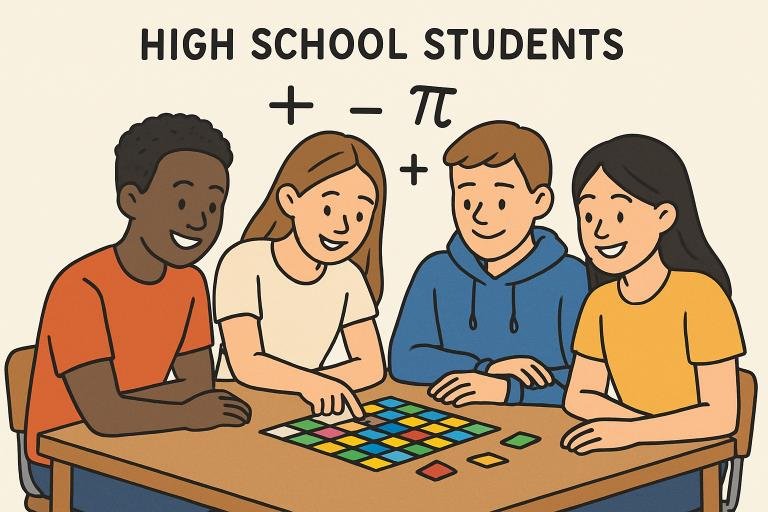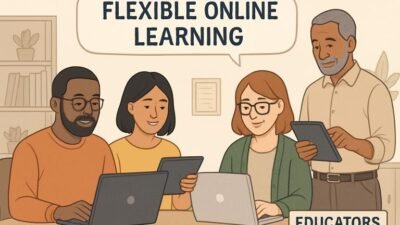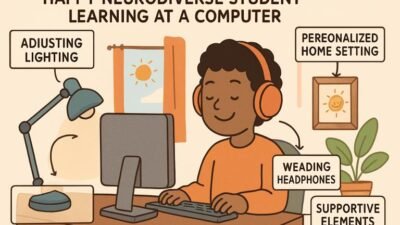Key Takeaways
- Implementing creative teaching methods can enhance student engagement and deepen their understanding of mathematics.
- Incorporating real-world applications and collaborative activities makes math more relevant and interesting for diverse learners.
- Utilizing technology and interactive tools can support various learning styles and classroom needs, ensuring no student is left behind.
Introduction
Many high school students find mathematics challenging and, as a result, become disengaged from lessons that can seem abstract or irrelevant. In today’s evolving educational landscape, teachers are turning to innovative strategies to capture and sustain student interest. These approaches extend beyond traditional lectures to create a more inclusive and engaging environment, sparking curiosity and fostering a deeper understanding among students. For those interested in promoting future educators who can shape meaningful math experiences, a mathematics secondary education degree offers comprehensive training and insights into these cutting-edge techniques.
Modern educational research emphasizes that a shift toward dynamic, student-centered practices can lead to measurable improvements in student outcomes. By weaving together creativity, technology, and real-world applications, educators not only improve engagement but also help students form lasting positive relationships with math, which often transforms their attitude toward the subject throughout their academic journey and beyond.
Understanding why students struggle or disengage is the first step toward meaningful change. Some students may have missed foundational concepts, while others may struggle with math anxiety or a lack of confidence. Effective strategies address these distinctive needs and create multiple entry points for understanding, participation, and success.
Incorporating Playful Learning
Playful learning in mathematics involves making lessons active, participatory, and engaging, thereby fostering a willingness to experiment and take intellectual risks. Activities such as logic puzzles, interactive math games, and collaborative brain teasers can prime students for creative thinking at the start of each lesson. This approach creates a supportive atmosphere, reduces anxiety, and turns math into an enjoyable challenge rather than a rote exercise. By blending competition, humor, and team-based goals, teachers can cultivate a sense of community in the classroom. Teachers report that when students are encouraged to explore and experiment, they’re more likely to persist through difficult problems and retain new concepts. Moreover, playful learning can help students develop resilience, as they come to see mistakes as part of the learning process rather than as failures. Incorporating play into instruction can also boost motivation, encourage creative problem-solving, and help math lessons feel like engaging adventures rather than stressful assessments.
Real-World Applications
Math becomes significantly more engaging when students see its relevance outside the classroom. Integrating real-world problems, like budgeting, health statistics, or environmental data, helps anchor abstract ideas in everyday life. For example, analyzing local election statistics, modeling the spread of a virus, or optimizing a school’s recycling program all encourage students to solve authentic problems. By connecting lessons to the world around them, students gain a practical understanding of why math matters and are more invested in learning.
Teachers can design assignments that ask students to gather data from their own lives or communities, such as conducting surveys of classmates or analyzing trends in local news stories. These activities demonstrate to students that mathematical thinking underpins many real-world processes, from financial decision-making to addressing global challenges such as climate change. Additionally, partnerships with local businesses or organizations can provide genuine contexts for math projects, inviting guest speakers, field trips, or collaborative projects to cement the real-world value of mathematics further.
Collaborative Learning Environments
Encouraging group work and peer-to-peer instruction allows students to deepen their understanding of complex mathematical concepts. Group projects, discussion-based problem-solving, and math circles foster a spirit of teamwork where students can explain ideas in their own words and experiment with diverse problem-solving strategies. This collaborative approach not only helps students learn from different perspectives but also cultivates valuable communication and social skills, which are crucial for success both inside and outside the classroom.
In collaborative settings, students often feel more willing to ask questions, voice misunderstandings, and share their opinions, creating a supportive environment where mistakes can be addressed constructively. Peer teaching is especially effective in reinforcing content knowledge, as explaining concepts to classmates helps solidify understanding and confidence. Moreover, working together on challenging problems helps develop interpersonal skills, patience, and empathy, qualities that are as important in academic settings as they are in future careers.
Integrating Technology
Technology is a powerful tool for enriching math instruction and meeting the needs of today’s digital learners. Interactive whiteboards, graphing calculators, simulation software, and educational apps offer hands-on practice and instant feedback. Online resources, such as Khan Academy and Desmos, provide personalized pathways that adapt to each student’s strengths and weaknesses, while virtual manipulatives make abstract ideas tangible. Bringing technology into the classroom creates an engaging, interactive space where all students can thrive. Digital platforms enable individualized instruction, where students can progress at their own pace and revisit challenging topics as needed. Teachers can leverage data from these tools to identify trends, monitor progress, and tailor instruction to support each learner better. Additionally, integrating technology familiarizes students with digital tools they will likely use in higher education and future careers, paving the way for lifelong learning and adaptability. Blended and flipped classroom models, which combine in-person instruction with digital learning experiences, have also gained popularity, providing students with flexible entry points and reinforcing content outside of traditional class times.
Visual Representations and Graphic Organizers
Mathematics often deals with ideas that are difficult to visualize. Charts, diagrams, graphs, and graphic organizers play a crucial role in making these concepts more accessible and understandable. Students can use visual tools to break down equations, explore geometric relationships, or map out the steps of complex word problems. Visualizing information enables learners to identify patterns, trends, and relationships that might otherwise remain hidden, thereby helping them synthesize and retain new information more effectively. Visual aids are particularly beneficial for students who struggle with verbal explanations or lengthy text, offering an alternative means of processing and retaining information. This approach supports a wider range of learning preferences and provides opportunities to connect mathematical ideas to real images, shapes, and diagrams. Graphic organizers, such as concept maps or flowcharts, can help students visually organize their thoughts and monitor their problem-solving processes, contributing to a more structured and confident approach to tackling complex math problems.
Project-Based Learning
Project-based learning (PBL) empowers students to take ownership of their education by challenging them to apply mathematical principles to meaningful, real-world contexts. Designing a city park, building scale models, or developing business plans are examples of projects that incorporate measurement, budgeting, data analysis, and critical reasoning. PBL encourages perseverance, innovation, and connections with other disciplines, such as science or technology, making math more relevant and impactful for students. Educators cite increased engagement and greater depth of understanding when students tackle open-ended, authentic projects.
Through project-based tasks, students have the opportunity to set goals, plan their approach, reflect on their progress, and share their findings with peers or community members. This process not only deepens their conceptual understanding but also helps cultivate self-management, accountability, and lifelong learning habits. PBL can be adapted for both short-term classroom projects and long-term interdisciplinary investigations that integrate STEM fields, literacy, and the arts, broadening the scope and appeal of mathematics in creative ways.
Conclusion
Transforming high school mathematics instruction requires creativity, dedication, and a willingness to try new approaches. By implementing playful learning, real-world connections, collaborative opportunities, technology integration, visual supports, and project-based experiences, educators can create vibrant classrooms where all students are motivated to engage deeply with math. These innovative practices not only boost achievement but also nurture the critical thinkers and problem-solvers needed for tomorrow’s challenges.
The journey toward more engaging math instruction is ongoing, requiring teachers to continually reflect, adapt, and refine their practice. By staying abreast of evolving research and remaining open to experimentation, educators ensure that every student finds meaning, purpose, and joy in their mathematical journey.



